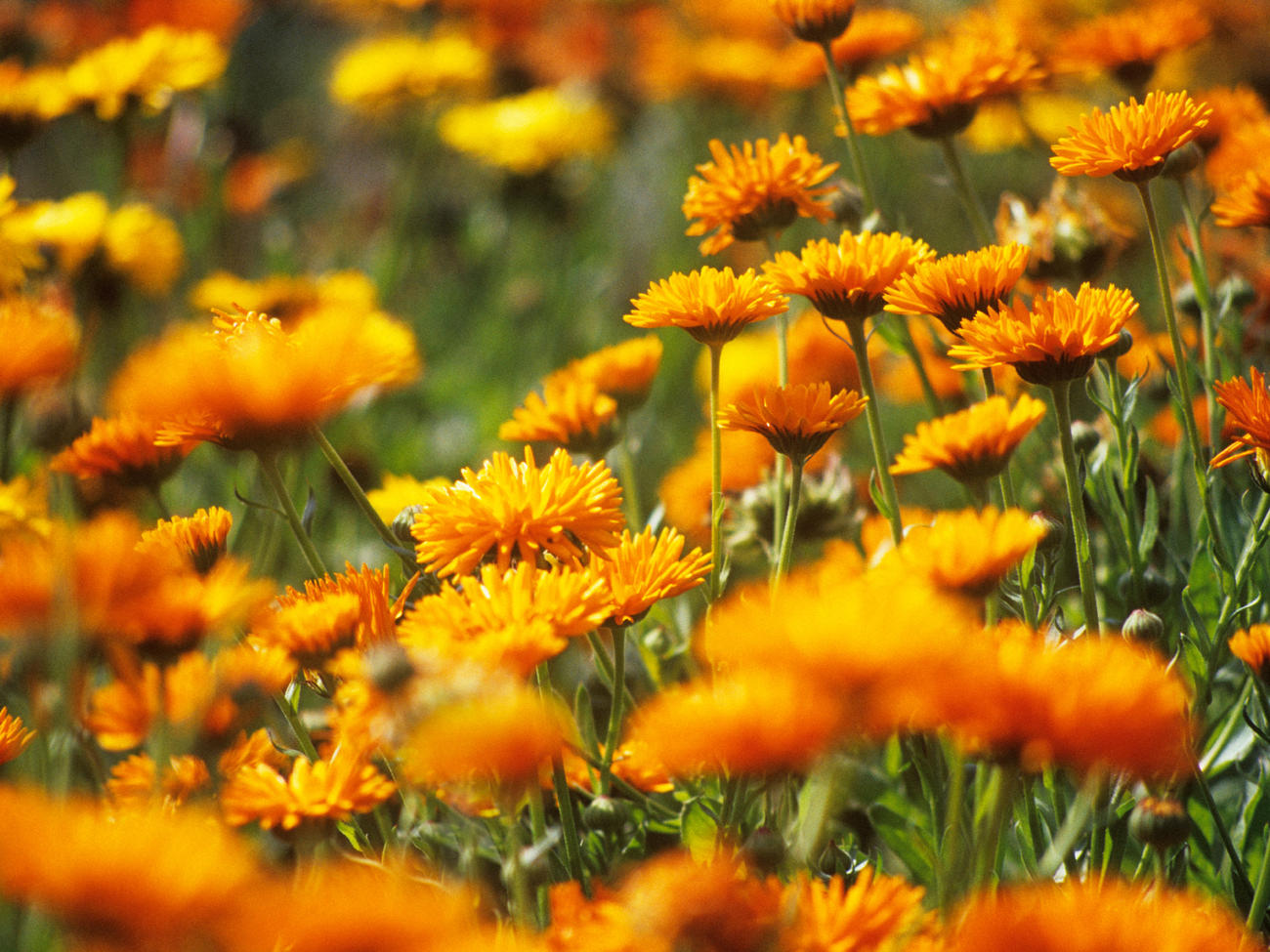
April

Plant
Calendulas are cheery, daisylike annuals that are easy to grow from seed. They bloom from spring until July or August in hot-summer areas and all summer in cooler locales. Edible petals add color to salads and soups. Sow seeds now for June flowers or purchase seedlings for instant color. Plant in a sunny spot and give moderate water. Choose old-fashioned forms, from orange-yellow ‘Classic’, pumpkin ‘Orange Zinger’, Pacific Beauty (a pale yellow to orange mix), and ‘Pink Surprise’ (mixed colors), to double flowers like ‘Apricots and Oranges’, crested double flowers like Kablouna Mix (apricot, gold, lemon, and orange), or quilled flowers such as orange ‘Porcupine’. Seeds are available from Thompson & Morgan (800/274-7333) or Seeds of Change (888/762-7333).
You can start planting cool-season annuals in containers now. Choose a pot that withstands frost (copper, plastic, stoneware, terra-cotta labeled “frost-proof,” or wood) and fill it with high-quality potting mix. Look for pansies, primroses, snapdragons, stock, sweet William, and violas. Mix in foliage plants such as chives, dusty miller, parsley, or vinca, or use vegetables with attractive leaves (sow seeds directly in the soil), including ‘Bull’s Blood’ beets, ferny-leafed lettuce, Russian kale, or Swiss chard. Cover containers with a fabric frost blanket for a few days while plants acclimate and, after that, at night whenever cold weather threatens.
